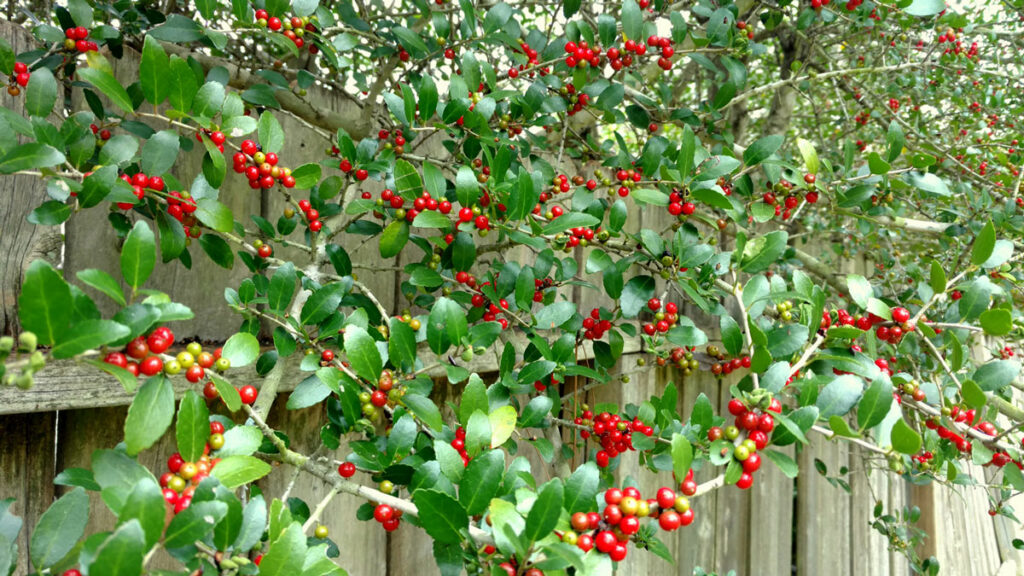Female yaupon holly bushes burst forth in the fall and winter with bright red, orange, or yellow berries, making them a festive part of the Highland Lakes landscape. Yaupon holly is a hardy native plant that loves the mild winters and summer heat of Central Texas. The Lone Star State is the farthest west the plant grows naturally. Its native habitat spreads across the Gulf Coast states to Florida and up the Eastern Seaboard to North Carolina.
Gardeners love it because it takes very little care, and, with some trimming and tending, it can be shaped into a bush or tree.
While birds often feast on the bright berries, they are toxic, but not deadly, to humans. When ingested by humans or pets, they can cause vomiting, diarrhea, dehydration, and drowsiness. Planting a yaupon holly in your yard, however, almost certainly guarantees regular visits by cardinals, finches, jays, and other feathered friends looking for tasty treats.
Other connoisseurs of yaupon berries are skunks, armadillos, and raccoons. Deer will eat the leaves and young shoots.
Human digestive systems are more attuned to the leaves as well, which contain the highest caffeine content of any plant native to North America. Yaupon tea was used as a daily drink in native cultures. The tea also had ceremonial purposes. Consuming large amounts induced vomiting, which is how it got its Latin name: Ilex vomitoria.
Native Americans found the wood useful for making arrows. More modern uses include the manufacture of white chess pieces.
A dioecious plant, the male and female both develop flowers, but only the females have berries. You need both to get the berries as cross pollination is necessary for females to bear fruit. Male flowers have four yellow stamens in the center of the flower, while females have a green ovary, or bump, in the center.
The plant itself lasts for decades, even in the wild.
suzanne@thepicayune.com
Highland Lakes character: Yaupon holly

Yaupon holly bush berries are poisonous but not deadly, at least to humans and pets. Birds and small mammals love them. Staff photo by Suzanne Freeman
